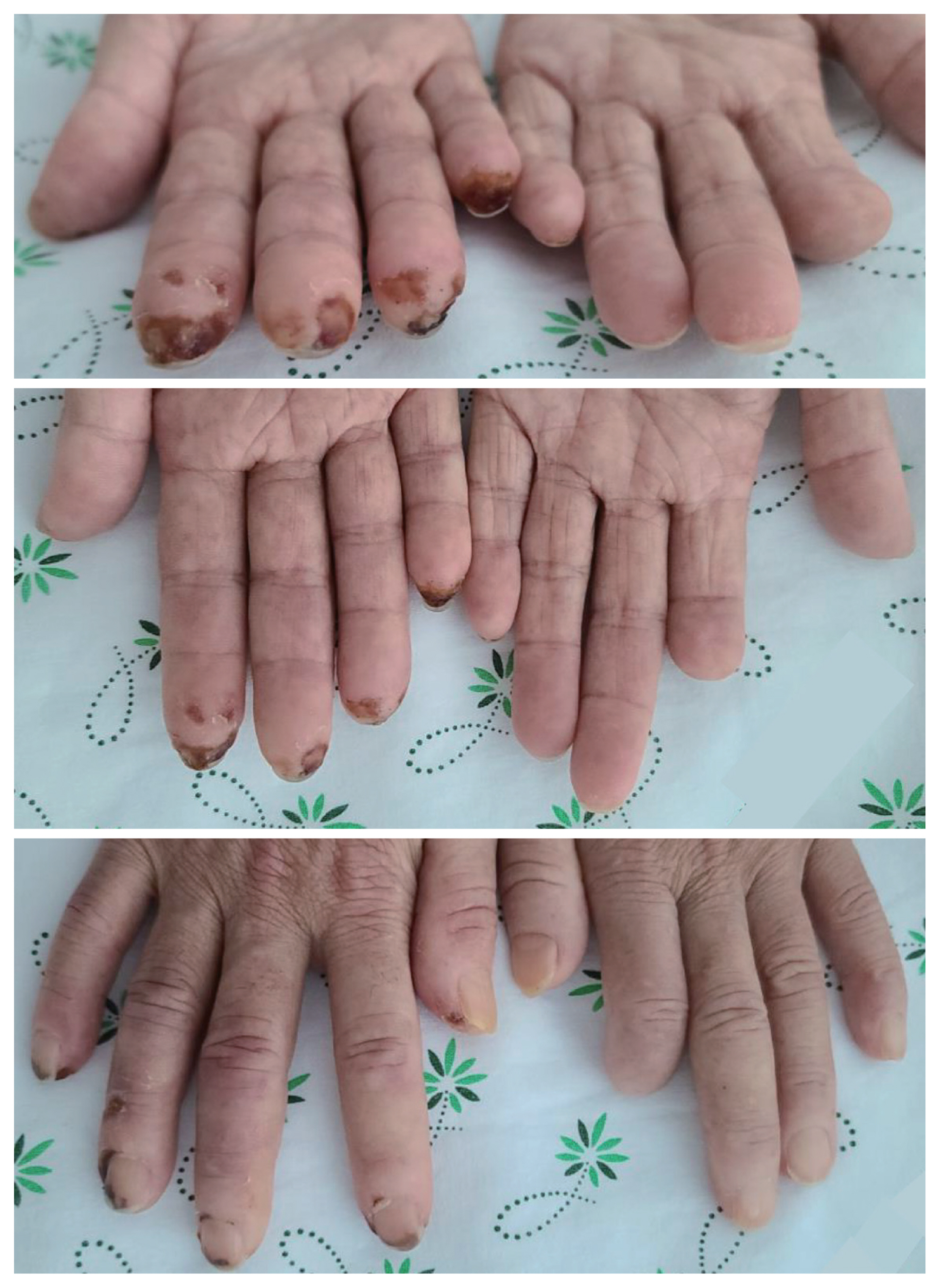A 63-year-old woman with a history of myasthenia gravis, hypertension, and diabetes was referred from Neurology to our department for fingertip lesions evaluation. During her 2-month hospitalization for myasthenia gravis management, she expressed concern about an unexpected lesion on her fingertip that progressively increased in size.
Physical examination revealed no significant lesions on her left hand. However, her right handŌĆÖs fingertips displayed variations in skin color from dark brown to black, with advancing necrotic changes, notably on the 5th finger (Fig. 1). Both fingers exhibited pallor from the distal to proximal interphalangeal joint, accompanied by noticeable coldness. Assessment indicated a skin thickness corresponding to a modified Rodnan Skin Score of 2. The patient presented a history of RaynaudŌĆÖs phenomenon spanning several years. Laboratory analysis revealed an elevated ANA titer of 1:1,280 and anti-centromere antibody level of 63 IU/mL, leading to the definitive systemic sclerosis diagnosis.
Despite no recorded trauma, consistent blood glucose testing was conducted on her right handŌĆÖs fingers during hospitalization. This suggests that the manifestation of ischemia and necrosis in fingertip regions, particularly where glucose testing was performed, originated from repetitive capillary microinjuries. Despite intravenous prostanoid therapy, progressive necrotic changes in the fifth finger necessitated surgical intervention, leading to the amputation of the distal phalanx.
Systemic sclerosis, an autoimmune connective tissue disease, features fibrosis and vasculopathy. Digital vasculopathy ranges from RaynaudŌĆÖs phenomenon to ulcers, and necrosis. Mechanical microtrauma alongside ischemia can trigger ulceration [1], causing pain, disability, and tissue loss. Thus, enhancing awareness and prioritizing preventive measures are of utmost importance [2].
Glucose monitoring is pivotal in diabetes management, often involving capillary glucose testing at the fingertips. However, our case study underscores potential complications, including ulceration and necrosis, specifically in systemic sclerosis patients. Consequently, it becomes paramount for clinicians to acknowledge these vulnerabilities among systemic sclerosis patients.




 PDF Links
PDF Links PubReader
PubReader ePub Link
ePub Link Full text via DOI
Full text via DOI Download Citation
Download Citation Print
Print





